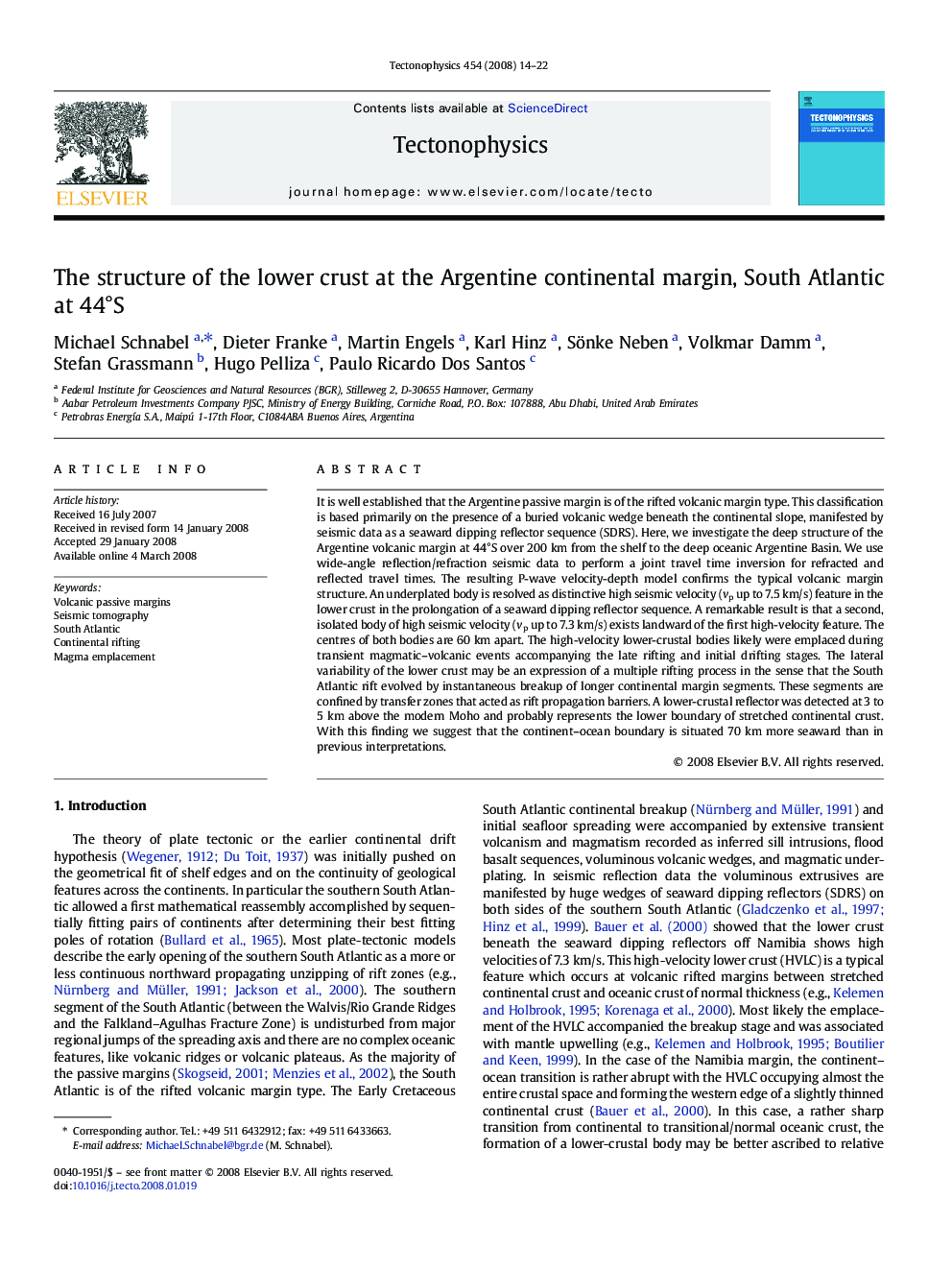| کد مقاله | کد نشریه | سال انتشار | مقاله انگلیسی | نسخه تمام متن |
|---|---|---|---|---|
| 4694431 | 1636913 | 2008 | 9 صفحه PDF | دانلود رایگان |

It is well established that the Argentine passive margin is of the rifted volcanic margin type. This classification is based primarily on the presence of a buried volcanic wedge beneath the continental slope, manifested by seismic data as a seaward dipping reflector sequence (SDRS). Here, we investigate the deep structure of the Argentine volcanic margin at 44°S over 200 km from the shelf to the deep oceanic Argentine Basin. We use wide-angle reflection/refraction seismic data to perform a joint travel time inversion for refracted and reflected travel times. The resulting P-wave velocity-depth model confirms the typical volcanic margin structure. An underplated body is resolved as distinctive high seismic velocity (vp up to 7.5 km/s) feature in the lower crust in the prolongation of a seaward dipping reflector sequence. A remarkable result is that a second, isolated body of high seismic velocity (vp up to 7.3 km/s) exists landward of the first high-velocity feature. The centres of both bodies are 60 km apart. The high-velocity lower-crustal bodies likely were emplaced during transient magmatic–volcanic events accompanying the late rifting and initial drifting stages. The lateral variability of the lower crust may be an expression of a multiple rifting process in the sense that the South Atlantic rift evolved by instantaneous breakup of longer continental margin segments. These segments are confined by transfer zones that acted as rift propagation barriers. A lower-crustal reflector was detected at 3 to 5 km above the modern Moho and probably represents the lower boundary of stretched continental crust. With this finding we suggest that the continent–ocean boundary is situated 70 km more seaward than in previous interpretations.
Journal: Tectonophysics - Volume 454, Issues 1–4, 27 June 2008, Pages 14–22